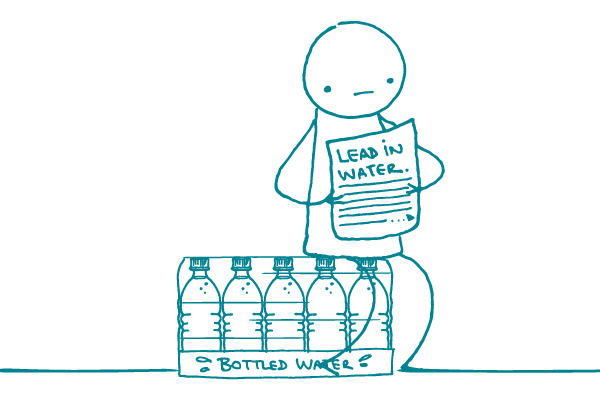
We’ve all seen the devastating news from Flint, MI. Many of us have already taken action — either personally or professionally. As health communicators, we have an important role to play in educating the public (or sometimes just our friends and family) when a health crisis makes headlines. Especially when it’s a complicated environmental health topic like lead poisoning.
You see, dear readers, lead poisoning prevention is near and dear to our ❤s at We ❤ Health Literacy Headquarters. We see it as a social justice issue, as lead poisoning disproportionally affects already vulnerable populations — like people of color, refugees, and people who can’t afford lead-safe housing.
As we communicate about the health impact of the crisis in Flint — and about the ongoing prevention efforts throughout the country — here are a few tips to keep in mind:
- Use plain language to explain the causes and dangers. Watch out for jargon like exposure or monitor.
- Make sure your message is appropriate for your audience. For example, telling the residents of Flint that lead poisoning is 100% preventable certainly isn’t the best approach at the moment. Instead, focus on clear action steps that concerned parents can take — like drinking bottled water and getting kids tested for lead poisoning.
- Never rely on numbers alone to communicate risk. If you’re following the Flint lead crisis news coverage, chances are you’ve been hearing about parts per billion (how lead is measured in water) and micrograms per deciliter (how lead is measured in a child’s bloodstream). With complex measurements like these, it’s even more important to give context for what certain measurements actually mean for individuals and their families.
It’s also important to remember that lead poisoning doesn’t only come from catastrophic events like Flint. CDC has some great plain language resources on lead poisoning prevention (disclaimer, we may have had something to do with these, back in the day):
- Lead Poisoning: Know the Facts
- Lead Poisoning: 5 things you can do to help lower your child’s lead level
The bottom line: Public health disasters like the lead poisoning crisis in Flint can offer valuable reminders about the critical need for effective health communication.
Browse recent posts